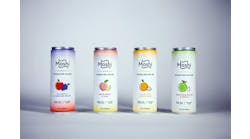Satiety seemed to be a big buzz word at this year’s Institute of Food Technologists Annual Meeting & Food Expo. I’ve always been fascinated by the word, though not in scientific terms, but in the marketing and psychological aspects.
To me, it implies something approaching the ultimate solution of the growing obesity problem: People, you gotta stop eating so much!
Back when fat first got a bad rap and the Nutrition Facts panel first appeared on product labels, removing fat seemed to be the universal solution to an obesity problem that wasn’t yet recognized.
Calories in vs. calories burned is a simple truism, but for some reason a difficult message to get across to Americans … although the Food Guide Pyramid tried, starting in its first iteration in 1992.
Then there was Atkins and the demonization of carbs. I can’t recall people ever being so passionate over a diet, although its “eat the bacon, skip the vegetables” message may have had a lot to do with its popularity. While it still has its devotees, the Atkins diet has pretty much been disproven.
Atkins was laid to rest just in time for the 2005 version of the Food Guide Pyramid, “MyPyramid,”which for the first time suggested that exercising, not just avoidance of certain foods, could be a critical missing factor. That’s an important point that was getting lost on a young generation that was “visiting” each other over computer screens and playing together via video game controllers.
All those solutions (with the exception of Atkins) had their points. All would have worked (and they are working for many) if only people had stuck to them. But the message was seemingly “we, the food industry, will take out the bad fat for you … the bad carbs … even the bad calories, or at least many of them.” But the exercise message: well, that was just too much for most people to handle.
But satiety kind of nips this problem where it starts: overeating. With fewer calories going in, even the same amount of calories being burned should equal weight loss. So much the better if you exercise a little.
InterHealth Nutraceuticals has had steady success with its Super Citrimax product. It’s an extract of some exotic plant, Garcinia cambogia, that contains high levels of hydroxycitric acid bound to calcium and potassium. Somehow, the stuff suppresses appetite. At the IFT show, the company was quoting clinical studies that showed people taking 500mg of Super Citrimax voluntarily consumed less food daily, and especially ate fewer snacks. Fuze and SoBe put it in some of their drinks.
DSM Nutrition was showing Fabuless, an oil-in-water emulsion the fine oil droplets of which are made from naturally occurring dietary lipids -- palm oil, coated with galactolipids from oat oil. Oat oil is naturally rich in so-called polar lipids, such as galactolipids. Thanks to them, Fabuless triggers the natural appetite control mechanism. By delaying the hunger signals that would normally be sent hours after a meal, consumers feel more satisfied than they would have been and consequently eat less.
Tate & Lyle was promoting “that feeling of fullness” as a key benefit of its Promitor dietary fibers, both corn fibers and resistant starch.
Dairy Management Inc., Rosemont, Ill., developed a Peach-Flavored Drink with Whey Protein and Fiber to help promote satiety. Whey proteins are being added to numerous products, not just in dairy, to improve the sense of fullness.
A new-to-IFT Korean company, Bionutrigen, is working with a number of fruit and vegetable extracts to promote satiety as well as to hasten calorie-burning.
There undoubtedly were more that didn’t catch my eye. And of course, anyone with a whole-grain/high-fiber message was on the bandwagon.
Interesting, too, was Fortitech’s use of the video game system Nintendo Wii as a promotional tool. The game “Guitar Hero” is great fun and was quite an attraction at the show. But it’s more interesting to note the evolution of this video game.
After long being considered one of the major causes of obesity, especially among children, Nintendo, at least, has taken a step as a solution. The Wii games are so interactive that most cannot be played sitting down, and some are quite strenuous. There’s also an entire suite of Wii Fit “games,” including the Wii Balance Board, “the world’s first game accessory capable of measuring your weight and body balance.”
Wii certainly is getting kids and many adults off the couch and at least into action in the family room.
With more video games of this type and more ingredients that keep us away from going back for seconds, we may beat this obestity epidemic yet.

